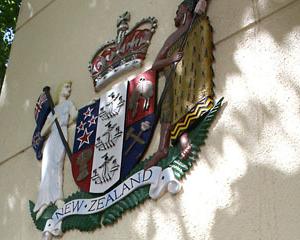Leopard seals resting on the beaches of Dunedin need to be respected, but there is no need to be scared of them, an expert says.
Leopard seal researcher Giverny Forbes, of Dunedin, said she was aware of four recent sightings of the Antarctic creatures, three of them around Otago Peninsula.
The one seen on St Clair Beach on Sunday was resting, Ms Forbes said.
"They do blend in quite well ... If anyone sees a big seal-like object on the beach, don’t assume it’s a log," she said.
The start of October was the peak season for seeing leopard seals around Dunedin, although the reason why was not entirely clear.
While uncommon, their presence seemed to be a regular thing, possibly due to food availability or the winter ice cycle.
The leopard seals ate "pretty much anything that they can fit into their mouths that they can get a hold of", including ghost sharks, penguins and krill, Ms Forbes said.
Once they were fed, all they would want to do was sleep, which was what the one at St Clair was doing.

"We don’t want people to be scared of them ... They’re just here for a snooze and so if people keep their distance they’re going to be really safe," Ms Forbes said.
People should keep at least 10m, but ideally about 20m, distance. Dog owners should keep their pets on a leash.
Leopard seals were a different species from the fur seals and sea lions, which frequent Dunedin.
They have no external ears, or ability to walk, having to move like a caterpillar by wriggling their torso.
While not much was known about their migration, the longest tracked journey was from South Georgia to the Antarctic.
Another had been tagged in Tasmania and had turned up in Oamaru.
Ms Forbes encouraged people to report sightings to the local Department of Conservation office in Dunedin and leopardseals.org.
Doc community ranger Jim Fyfe said the seal appeared to have left the beach yesterday afternoon and signs marking its position had been removed.
Advertisement








